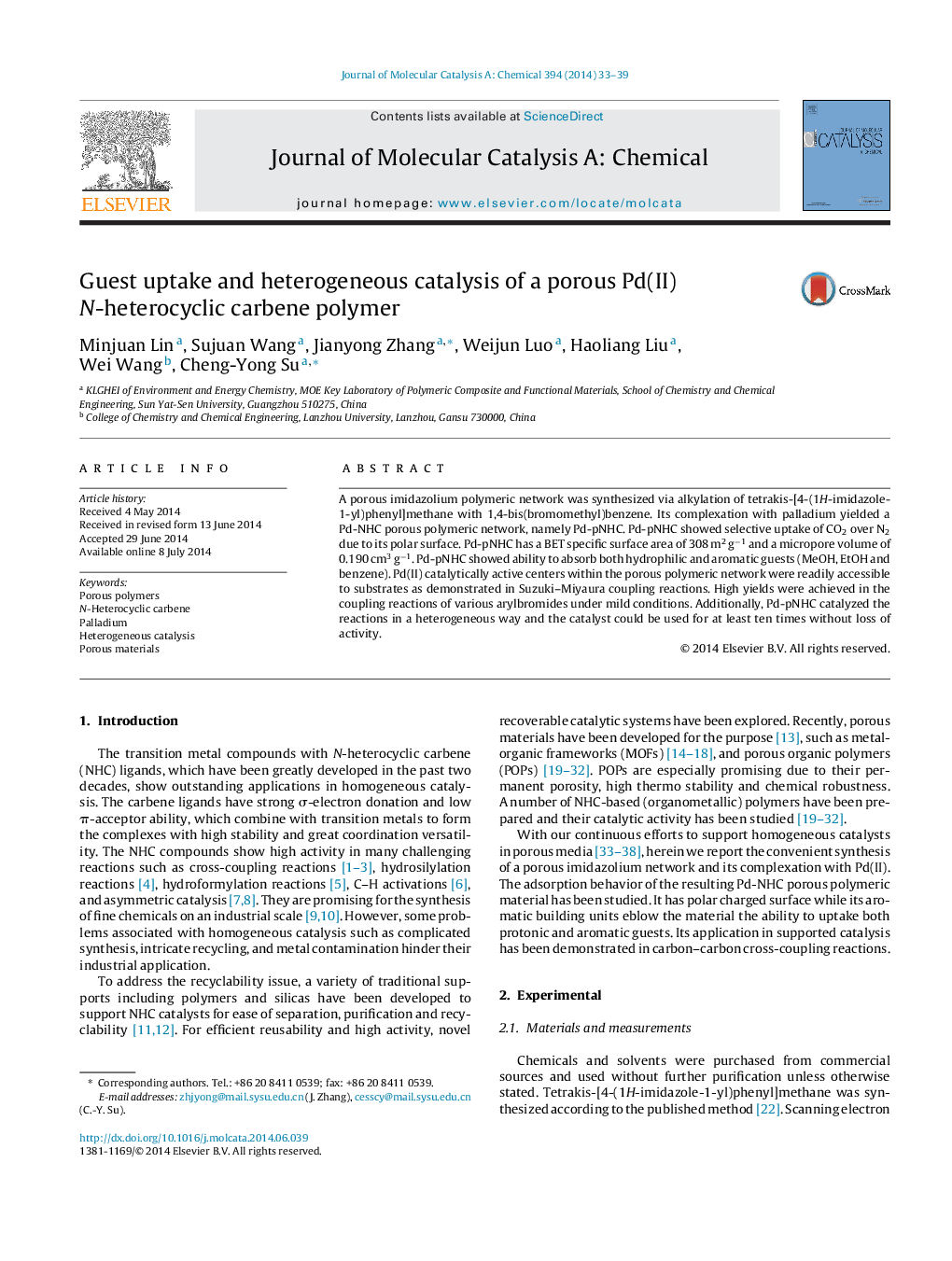| کد مقاله | کد نشریه | سال انتشار | مقاله انگلیسی | نسخه تمام متن |
|---|---|---|---|---|
| 65407 | 48390 | 2014 | 7 صفحه PDF | دانلود رایگان |

• A porous imidazolium polymeric network has been prepared.
• Its complexation with palladium yielded a Pd-NHC porous polymeric network.
• The Pd-NHC network showed ability to absorb both hydrophilic and aromatic guests.
• The Pd-NHC network catalyzed carbon–carbon coupling reactions in a heterogeneous way with excellent recyclability.
A porous imidazolium polymeric network was synthesized via alkylation of tetrakis-[4-(1H-imidazole-1-yl)phenyl]methane with 1,4-bis(bromomethyl)benzene. Its complexation with palladium yielded a Pd-NHC porous polymeric network, namely Pd-pNHC. Pd-pNHC showed selective uptake of CO2 over N2 due to its polar surface. Pd-pNHC has a BET specific surface area of 308 m2 g−1 and a micropore volume of 0.190 cm3 g−1. Pd-pNHC showed ability to absorb both hydrophilic and aromatic guests (MeOH, EtOH and benzene). Pd(II) catalytically active centers within the porous polymeric network were readily accessible to substrates as demonstrated in Suzuki–Miyaura coupling reactions. High yields were achieved in the coupling reactions of various arylbromides under mild conditions. Additionally, Pd-pNHC catalyzed the reactions in a heterogeneous way and the catalyst could be used for at least ten times without loss of activity.
Figure optionsDownload high-quality image (135 K)Download as PowerPoint slide
Journal: Journal of Molecular Catalysis A: Chemical - Volume 394, 15 November 2014, Pages 33–39